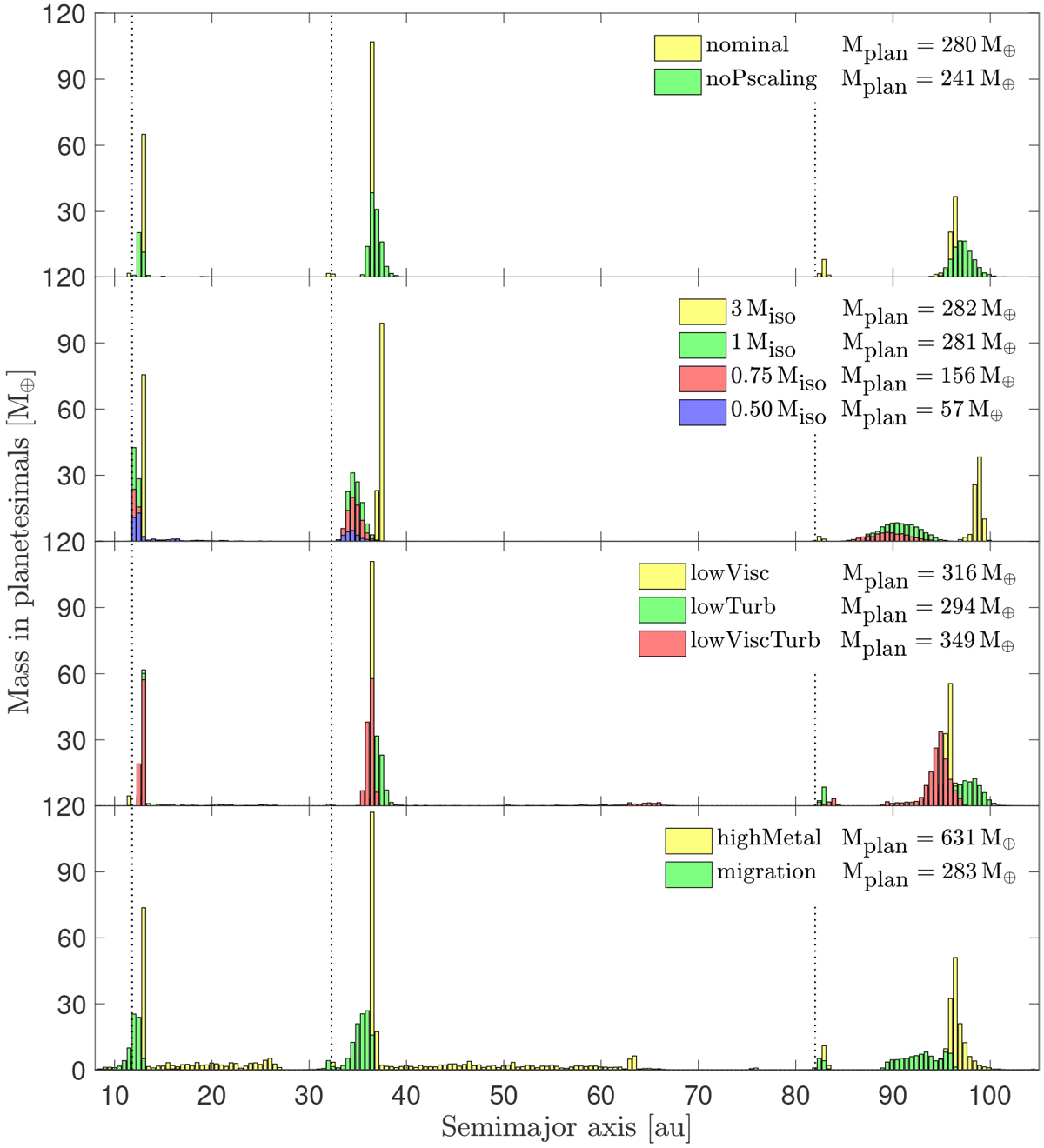Fig. 4

Histogram showing the total amount of mass in planetesimals that has formed at different locations in the disc after 1 Myr for each simulation in the parameter study. The dotted vertical lines indicate the semimajor axes of the planets. When the pressurescaling is removed (simulation “noPscaling”), the critical density required for forming planetesimals at the gap edge increases, resulting in less planetesimal formation. The amount of planetesimal formation does not vary a lot between the simulations where the planetary mass is larger than the pebble isolation mass since millimeter pebbles cannot drift past the gaps and planetesimal formation is extremely efficient where the pressure gradient is close to zero. For planetary masses that are lower than the pebble isolation mass, the amount of planetesimals that form rapidly decreases with decreasing planetary mass. Lowering the viscosity parameter and the turbulent diffusion results in faster drift velocities in the viscously expanding part of the disc. Because of this, more pebbles reach the outermost gap edge and are turned into planetesimals. Increasing the metallicity (simulation highMetal) results in sporadic planetesimal formation in the interplanetary regions. When a constant migration speed is added to the planets, the location of the gap edges are shifted inward with time, resulting in the region where planetesimals form to shift inward accordingly.
Current usage metrics show cumulative count of Article Views (full-text article views including HTML views, PDF and ePub downloads, according to the available data) and Abstracts Views on Vision4Press platform.
Data correspond to usage on the plateform after 2015. The current usage metrics is available 48-96 hours after online publication and is updated daily on week days.
Initial download of the metrics may take a while.


